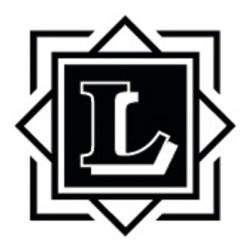Analysis
The deceased, Phyllis Hart née Samways (W) died on 7 November 2008 aged 86. Her husband (H) had died in January 2005. They left three children, two sons, Kenneth (K) and Paul Hart (P) and a daughter Susan Burbidge (S), who all have children of their own. W had a twin sister (J) who died four weeks after her and three other surviving siblings: Arthur, Graham and Christine (the Samways). Some eight years before he died H wished to sell the family firm to one of his children, but only S and her husband (B) were prepared to take it over on his terms, which did not include the transfer of the business premises. Following H’s death W had an estate of some £1m, including her home (No 7), another property (No 43) that was rented out, the business premises and £290,000 cash in a building society account. H had intended that S and B should receive the business premises on the death of the survivor of H and W. W consulted the family solicitor, Mr Gary Pick (GMP) and in February 2006 arranged a variation of H’s will releasing S and B from liability for the remainder of the purchase price of the business and giving them the business premises, a gift of some £319,000. At the same time, in order to ‘effectively balance the books’, W executed a will (the 2006 will) giving the proceeds of sale of No 7 and No 43 to K and P. A year later W called GMP to her home where S was present and gave instructions for a new will (the 2007 will), which she executed. The discovery by K and P of the gift to S and B had caused some resentment and W complained of a lack of contact from K and P. Under this will No 43 was no longer given to K and P but to J, and the Samways, together with any of W’s grandchildren living at her death. No 7 continued to be given to K and P and residue continued to be divided equally between S, K and P.
S and B considered that it would be a good idea if W moved in with them and a property, Little Manor Farm, was found that W liked. It was valued at £1.15m. GMP was consulted on W’s behalf in February 2008. He met S and W noting that W was disenchanted with K and P, determined to let S have the £290,000 capital and wished to join with S and B in buying Little Manor. S explained the purchase would be funded by selling her property and W’s two properties and with recourse to the £290,000 ‘which could be added to [the sale proceeds of the three properties] to pay the purchase price’ and that with the sale of Nos 7 and 43, W wanted to honour the gifts to K and P and to J and the Samways by legacies equating to the sale proceeds of those properties. GMP advised that if Little Manor were to be purchased, it should not be in the names of S and B alone. There was no mention at the meeting of W not wanting to be on the title to Little Manor, much less of fearing that, if she were on the title, K and P might get their hands on the property. K and P heard of the proposed sale of No 7 and there were family meetings which P recorded. W told them that she would own the new house but S corrected this to a 50% share or one based on the amount put up. S assured them that GMP was involved in the sale and their interest in the sale proceeds remained. She did not, however, tell them that the purchase of Little Manor was in hand leading them to believe GMP would be involved when a new property was found. Meanwhile a series of transactions were taking place between February and October 2008 by which W transferred money to S and B to enable them to purchase Little Manor in their joint names. GMP was again consulted on the matter in May 2008 and maintained his advice to W. He continued to represent W’s interests seeking information on the sale. S informed him in writing that her solicitors would be in touch with him to discuss the structuring of the sale. In fact S had given no such instructions and her solicitors were unaware of any interest that W and her solicitor might have in the transactions. W did live very briefly in Little Manor but died suddenly and unexpectedly shortly after moving in. The effect of the transactions was to adeem two gifts in W’s last will, made on 26 April 2007 (the 2007 will), and, arguably, to diminish the size of residue.
K and P and the Samways brought actions against S alleging that she exerted undue influence on her mother in connection with the sale of the properties and the transfer of money seeking to have the transactions set aside so that the 2007 will could take effect as if those transactions had not occurred. B was joined as a knowing recipient of the benefit of the transactions in that he became an equal co-owner of Little Manor.
Held: claims succeeded [133]
There was no evidence of actual undue influence but there had been presumed undue influence. In order to establish this there first had to be a relationship of ‘trust and confidence, reliance, dependence or vulnerability’ on the one hand, and ‘ascendency, domination or control’ on the other. This exactly described the nature of W’s relationship with S as it developed over the months following H’s death [111]. There then had to be a transaction of such a size or nature as to call for an explanation as being not readily explicable by the relationship of the parties. Once that stage was reached the burden of proof shifted to the person seeking to uphold the transaction to demonstrate on a balance of probabilities that the transaction was the result of the free exercise by the transferor of an independent will. The extent of the task that lay on that person was likely to depend on the strength of the matters that had caused the shift in the burden of proof. Adducing evidence to show that the donor received independent advice was one way, but by no means an essential and, depending on the circumstances, not necessarily a sufficient way, of demonstrating that the donor acted independently of any undue influence [47].
In this case the transfer to S and B of the £290,000 in February 2008 took place without W obtaining any prior advice. The proposal to use that money and the sale proceeds of Nos 7 and 43 in the purchase of Little Manor was contrary to the advice that W’s solicitor had given and the subsequent application of those monies in that purchase and the manner in which they were applied (in return for no interest in or security over the property) occurred without W receiving the advice of any solicitor. W was 86. It was clear that an explanation was called for and the burden of proof shifted to S to rebut the presumption of undue influence which arose [123]. S had failed to persuade the court the W was acting fully independently of this undue influence when she entered into the impugned transactions. Her protestation that the way the matter was structured – with W having no protection for her investment in the new property and with no steps being taken to amend the 2007 will to enable the gifts to K, P and the others to be honoured – resulted from the exercise by W of an independent will in the full knowledge of what she was doing and why it could not be accepted [132].
There had not been any conscious wrongdoing in S’s dealings with W nor in B’s but he had shared equally with S in the benefits that resulted from S’s undue influence over her mother with full knowledge of the fact that the two of them were in a relationship of influence. He was obliged (to the same extent that S was) to restore W’s estate to the position it would have been in if the impugned transactions had not occurred [146].
JUDGMENT SIR WILLIAM BLACKBURNE: Introduction [1] This is the trial of two claims which the Master ordered to be heard together. They are concerned with the estate of Mrs Phyllis Hart. It will simplify matters if I refer to people, I hope without discourtesy, by their first names. Phyllis, as I shall therefore call her, …Continue reading "Hart & anr v Burbidge & ors; Samways & ors v Burbidge & ors [2013] EWHC 1628 (Ch)"

